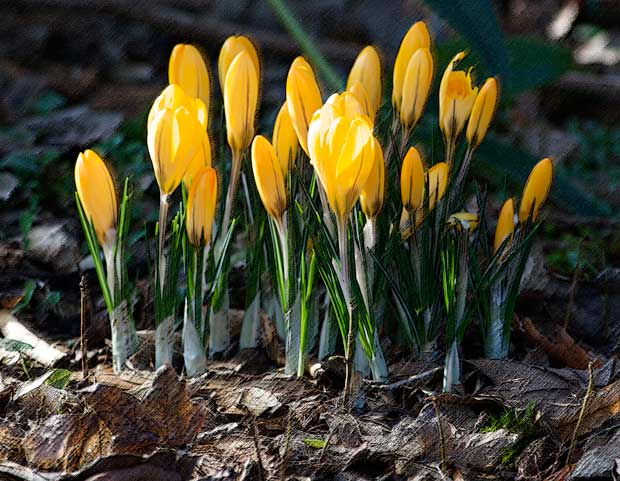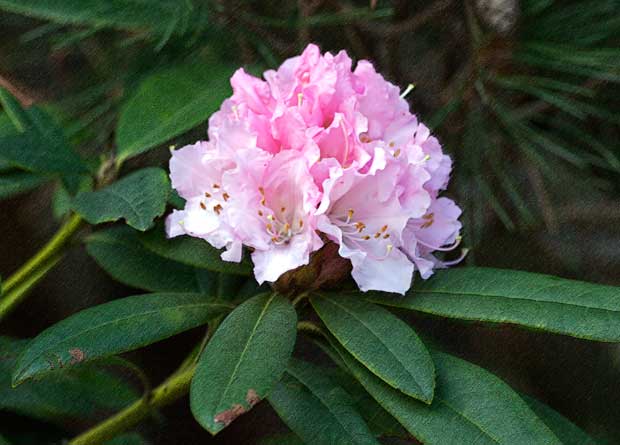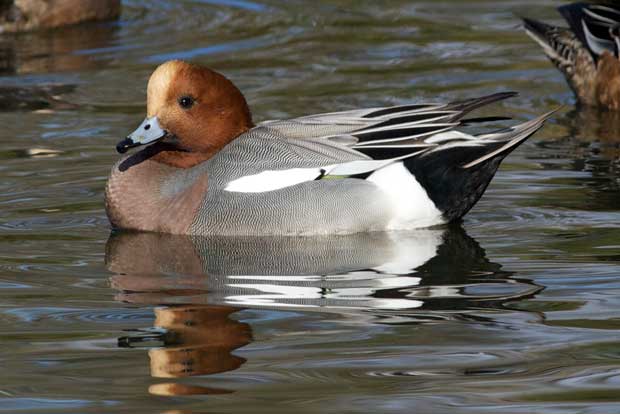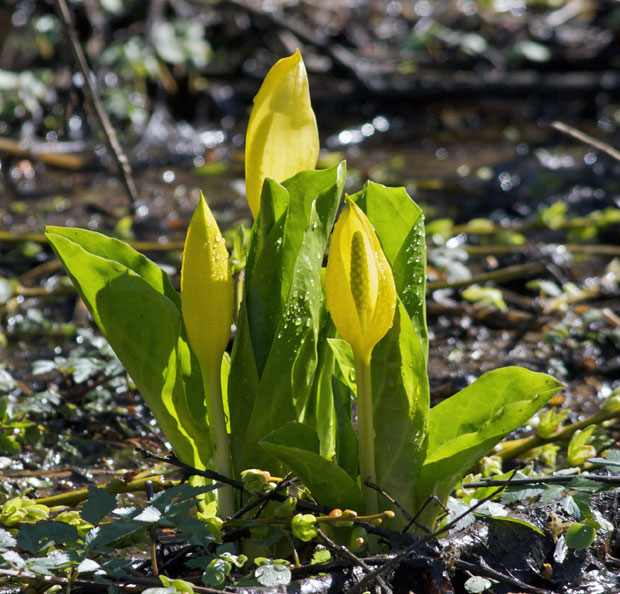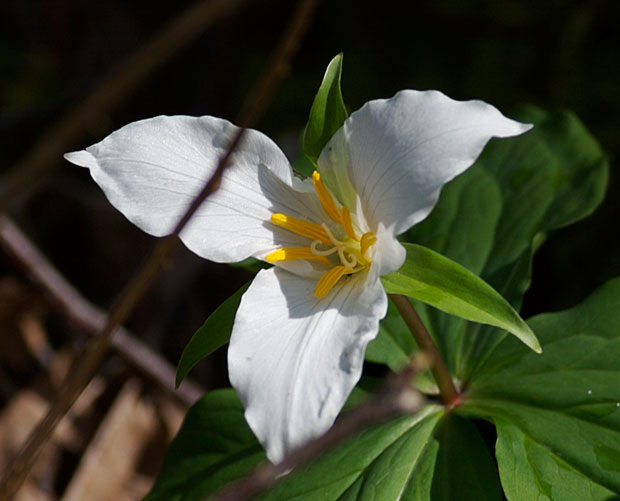Though I’ll have to admit that their are portions of Sky Time in Gray’s River that I skim over rather rapidly, I’m sometimes amazed at how Pyle is able to hold my attention even when he’s writing about things I would normally avoid reading.
For me, his writing is at its best when he is describing a natural “scene” as in this description of June:
For now, at summer solstice, everything is gluttony. Caterpillars convert leaves with haste and immoderation. Brown slugs ingest the marigolds as if there were no tomorrow, which, if Thea has her way, there won’t be for them. Our doe walks through the backyard, making herself welcome by munching the thimble-berry beneath the buddleia. But she can’t stay good: she paces over to the currants, blueberries, and Asian pear and takes a bite of each before Thea chases her away. Minutes later I spot her just off the front porch, nibbling the Maianthemum, and her crunching tells me that those lush, heart-shaped leaves really are salad
The porch swallows swoop up into their nest hole with great facility and frequency, and I can hear the reasons peep through the battens. Brown flutterings outside my window the Swainson’s, jumping the bushes for red huckleberries. We cover the blueberries and red currants with netting to try to save a few for ourselves. As for our own takings, currants are already appearing on the oatmeal, and our own good lettuce and snap peas grace every meal. All this harvest seems early, with spring such a recent memory but not as precocious as the oldest leaves of Indian plum, already going yellow. Though the official first day of summer is just past, the first signs of the season’s fullness and consequent mortality have already appeared.
I’ve observed all of these things at one time or another, but I don’t think I would ever have thought of putting them all together. It seems like the same kind of cataloging that makes many of Whitman’s poems so powerful.
Pyle often manages to inform while entertaining:
Now, too, is when thistle goes to seed. While “thistledown” is a pretty word, and the sight of a million silky paragliders filling the summer sky is undeniably beautiful, the plant itself has more detractors than lovers. I should say “plants,” as there are about 464 species of thistles (genus Cirsiuin) in the world, 109 in North America, and 4 in the Willapa Hills. Only the Scots, who made the thistle their emblem, seem to revere it outright.
Thistles are composites (members of the aster family) whose heads have only the narrowest of disk flowers, bunched together like a badger-hair shaving brush. The flowers of most species are mauve, red-purple, or lavender, though some are pink or scarlet or, like the big, ediblestalked elk thistle of the high western mountains, white. Thistle scent is usually sweet, like honey and overripe plums. But if you stick your nose into a thistle head you’re likely to get pricked, as the flower, sepals, stem, and leaves are abundantly armed with sharp points. Walking through thistled ground in shorts leaves my legs scratched and itchy. Artichokes are big thistles. What we eat is the flesh at the base of the armed bracts and the “heart,” the head of the stem and the flower receptacle. The choke, the part we cut away, is the bunch of fibers that would become giant thistledown if allowed to grow.
The classic Scots thistle is reckoned to be the same as the common bull thistle (Cirsium vulgare or lanceolatum). According to tradition, it became the Caledonian national symbol by puncturing the bare feet of Danish invaders, whose howls of pain gave them away. The Scottish motto it inspired, Nemo me impune lacessit (“No one provokes me with impunity,” or “Wha duar meddle wi me”), equally describes the plant and the incited Highlanders. But I’ll bet lowland Scottish farmers hold no
more love for thistles than English farmers across the border The sad fact is that thistles tend to invade hayfields and ruin the the quality of the hay. Not only are they poor forage, but the spines can cause injury and infection in a cow’s mouth-imagine those prickles lodging in the soft gums of a Holstein.
Our native thistle species are important parts of local plant communities, but they tend to occur in less disturbed areas such as mountain meadows or coastal headlands. Alien thistles dominate the much-altered lowlands, especially bull thistle and Canada thistle (Cirsium arvense), a European import despite its common name. These “weeds” aggressively displace more desirable” plants, so farmers and nature reserve managers often spray them with herbicides. But agriculture in this area is not as intensive as it used to be, even in the years I’ve been here.
First, such passages remind me that Pyle is a Yale-trained ecologist. Second, it reminds me that in the past thistles have simply been a damnable weed that is nearly impossible to get rid of, but now that I’ve started birding I’ve anticipated their blooming because it provides the best opportunities to take pictures of Goldfinches. Of course, it wasn’t until I read this passage that I realized how widespread, and how numerous, thistles really are. I expect I’ll see them with a new appreciation this summer.
Pyle’s portrayal of August even managed to make me nostalgic with this passage:
Our own primary items of prey in the fecund wreckage of summer are the berries. Blackberries say high summer here and connote languorous afternoons, scratched-up hands and wrists purple-stained fingers, and the promise of pie. Three species o blackberries proliferate in western Washington. The only indigenous one, and the only one worth picking, according to many locals, is Rubus ursinus, known as dewberry, native blackberry, or just “the little ones.” Dewberry trails through the clear-cuts and over the road cuts in endless wiry vines with short, ankle-raking stickers and triplets of leaves that carry good color all winter long. The little-fingernail-sized berries aren’t very seedy, are the most flavorful of all, and ripen around mid-July.
I’d almost forgotten my family’s berry-picking excursions when I was five or six years old until I read this passage, a real mixed blessing to me because it seemed impossible to spend a day picking those berries without running into a garter snake up close and personal. Even those encounters couldn’t deter our efforts to stock up on enough blackberries to guarantee Blackberry Pie the rest of the winter.
Unfortunately, I’m not nearly as nostalgic as Pyle is about vanishing Post Offices or Granges. Still, it was amazing that he could sometimes find a specific detail that would even make these digressions interesting:
But at the next election, Krist Novoselic was elected Gatekeeper. The former bassist and cofounder of the band Nirvana, Krist, now deeply interested in political reform, settled one valley over and joined the Grange in hopes of building on its progressive past. He used his influence in Olympia to obtain from the State Grange a new-old owl, handsomely nickel-plated, rescued from some Grange Hall that had gone down. To put off such a fate here, he and Steve, Karl, Jim, Rick, Delvin, Krist, and other members have devoted themselves to restoring our hail. Dedicated in 1905 and repaired in fits and starts since, the building has been showing its hundred years. Already we have a new (all important) kitchen and a furnace that actually heats the hall without drowning out the reading of the minutes, and the building has been raised above flood level.
So we still meet, brothers and sisters with very different opinions who converse civilly for the most part and wash down too many homemade cookies with hot coffee. Stories are still told, which may be more important than the fading ritual and shrinking herds. Krist has now been elected Master, and he has instituted progressive election changes that reduce the endless and cumbersome old process to a brisk half-hour while allowing members to actually run for offices of their choice.
Our members from across K-M Mountain in Skamokawa, stimulated by new energy in the community, are taking steps to restore their own beautiful but badly flooded hail and begin anew. Even as the veterans dwindle, the Granges they made, like their villages, carry on.
At least for now.
Having lived in the city or suburbs my whole life, I can understand the appeal of small towns where you actually know and talk to your neighbors. Unfortunately, I’m afraid that I would disappoint my neighbors by refusing to join the local church, Grange, or, even, support the local tavern — unless they served a great lunch or dinner. At times I found myself learning more about the small community of Gray’s River than I really wanted to know, and wished that Pyle spent more time on the ecology of the area.
Like this:
Like Loading...
